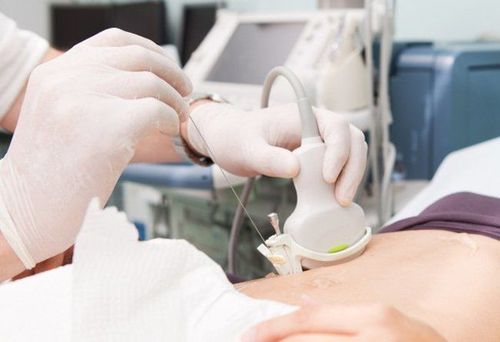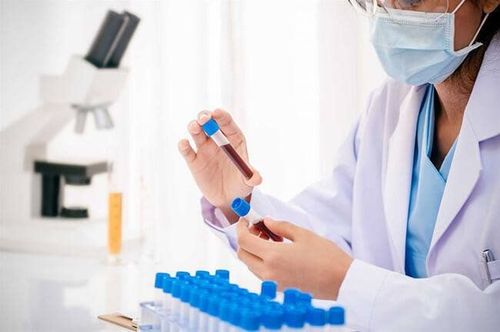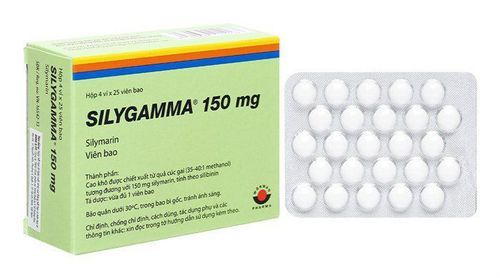This is an automatically translated article.
Dubin-Johnson syndrome is a rare chronic disorder of bilirubin metabolism, characterized by conjugated hyperbilirubinemia, dark pigmentation of the liver, and the presence of abnormal pigmentation in the liver parenchyma cells. Although the disease is usually benign, does not cause liver damage, does not increase liver enzymes, the disease will cause premature jaundice in babies, possibly from birth.1. What is Dubin-Johnson syndrome?
First described in 1954, Dubin-Johnson syndrome is a rare recessive genetic disease with recurrent episodes of benign bilirubin metabolism disorder, resulting in conjugated hyperbilirubinemia. As a result, pigment deposition causes the liver to have a characteristic black color.
The cause of Dubin-Johnson syndrome is a mutation in the synthesis of a protein responsible for the excretion of bilirubin and other insoluble organic salts. Therefore, Dubin-Johnson syndrome has an early clinical onset, possibly as early as infancy. After that, the disease will have many relapses in later life.
The overall prevalence of Dubin-Johnson syndrome in the population is extremely low but has also been described in all geographic regions and races. The disease is similar in both sexes, but some reports suggest a higher prevalence and earlier onset in men.
2. What are the manifestations of Dubin-Johnson syndrome?
2.1 History Patients with Dubin-Johnson syndrome tend to present with nonpruritic jaundice very early in life, often during the early teen years.
Although most patients are asymptomatic, some complain of vague right upper quadrant pain. This will make late detection or diagnosis difficult if the appropriate jaundice test is not indicated.
Many cases of the disease may become apparent only after starting oral contraceptives (because of the reduction of organic anion transport) or during pregnancy.
Some patients with Dubin-Johnson syndrome have a history of chronic hepatitis B, tuberculous lymphadenitis, chronic cholecystitis, and coronary artery disease. A thorough family history may reveal a history of autosomal recessive jaundice.

Một số trường hợp mắc hội chứng Dubin-Johnson có tiền căn của viêm gan siêu vi B mạn tính
2.2 Examination Observation of jaundice but no pruritus is the most prominent clinical feature of Dubin-Johnson syndrome. In addition, findings on physical examination are generally normal, except for possibility of hepatosplenomegaly in some cases.
3. How is Dubin-Johnson syndrome diagnosed?
The diagnosis of Dubin-Johnson syndrome should be considered in all patients with conjugated hyperbilirubinemia when liver function test results are normal.
The diagnosis can be further confirmed by demonstrating that an increased ratio of coproporphyrin I to coproporphyrin III in the urine results in a positive bilirubinuria on the basis of urinalysis. In addition, the test also showed decreased prothrombin activity due to lower levels of clotting factor VII, observed in 60% of patients with Dubin-Johnson syndrome.
With imaging tools, ultrasound shows that patients with Dubin-Johnson syndrome have a normal bile duct system, some may have gallstone cholecystitis. With hepatobiliary angiography, images of the liver are observed immediately after intravenous administration of radioactive dye and remain robustly and uniformly visualized for up to 120 minutes. Meanwhile, the gallbladder can be seen as late as 90 minutes after dye injection. It is this mismatch that is considered to be the sole factor that distinguishes Dubin-Johnson syndrome from other primary liver abnormalities.
Alternatively, Dubin-Johnson syndrome can also be diagnosed by liver biopsy. However, this procedure is not necessary if the clinician knows how to interpret the results of the blood and urine hemoglobin metabolism products mentioned above.
Finally, genetic testing with the abnormal genes in Dubin-Johnson syndrome has been identified.

Hội chứng Dubin-Johnson cũng có thể được chẩn đoán bằng sinh thiết gan
4. How is Dubin-Johnson syndrome treated?
Since Dubin-Johnson syndrome is considered a benign disorder, most cases do not require any specific therapy.
However, patients should be warned that pregnancy, oral contraceptive use and other comorbidities may worsen jaundice. At the same time, the metabolism of some drugs may be affected in patients with Dubin-Johnson syndrome. Therefore, the treatment of these subjects always requires a doctor to carefully monitor the allowed drugs, including non-prescription drugs or dietary supplements.
5. Is Dubin-Johnson syndrome dangerous?
In general, Dubin-Johnson syndrome is a benign metabolic disorder and the life expectancy of patients is normal.
However, complications of Dubin-Johnson syndrome have been reported, including jaundice and hepatomegaly. Taking birth control pills, being pregnant, and having other chronic medical conditions can worsen jaundice. Because the disease reduces the activity of prothrombin, indirectly affecting the blood clotting pathway, patients are also at risk of bleeding more easily than the general population.
Some infants with Dubin-Johnson syndrome may have moderate to severe cholestasis. From that, the risk of developing gallstones in adulthood of these children will be many times higher than the general population.
In summary, Dubin-Johnson syndrome is a disease caused by an inherited mutation in the protein that transports conjugated bilirubin across the membranes of liver cells and into the bile ducts. Consequently, the disease will cause hyperbilirubinemia, jaundice at a young age and recur in several episodes. Although the severity of Dubin-Johnson syndrome is considered to be insignificant, early diagnosis is essential to a plan to preserve stable long-term hepatic metabolism. At Vinmec International General Hospital, diagnostic tests for Dubin-Johnson syndrome are performed thanks to the process of examination and treatment, pre-marital health examination packages and prenatal diagnosis with suspected cases of pregnant women. and fetuses with genetic abnormalities or Dubin-Johnson syndrome.

Gói khám sức khỏe tiền hôn nhân tại Vinmec giúp các cặp vợ chồng an tâm hơn khi chuẩn bị mang thai
Please dial HOTLINE for more information or register for an appointment HERE. Download MyVinmec app to make appointments faster and to manage your bookings easily.













